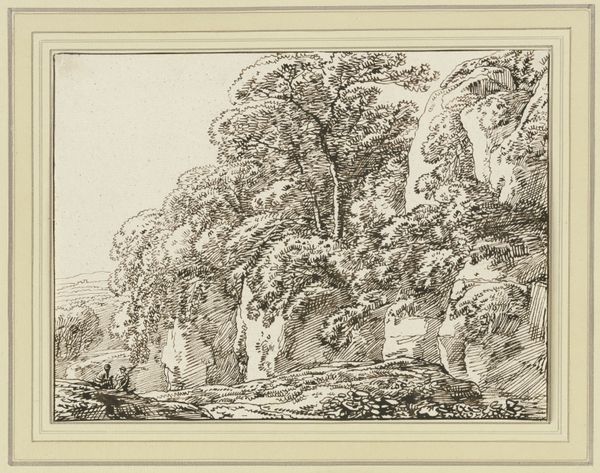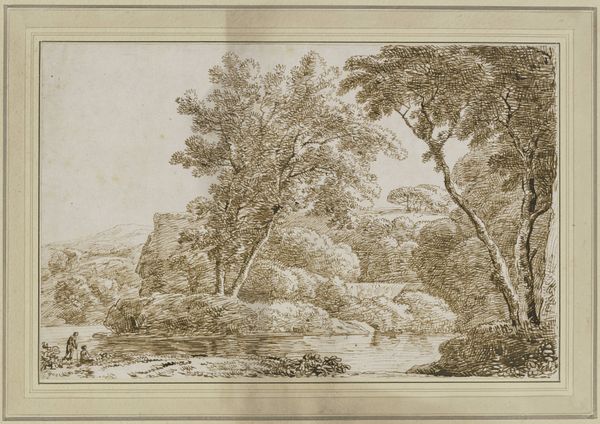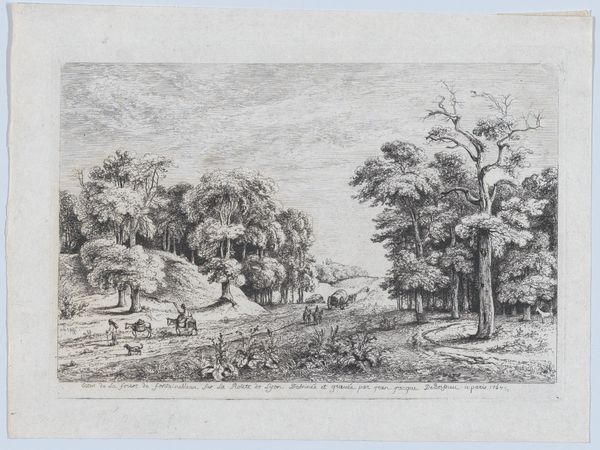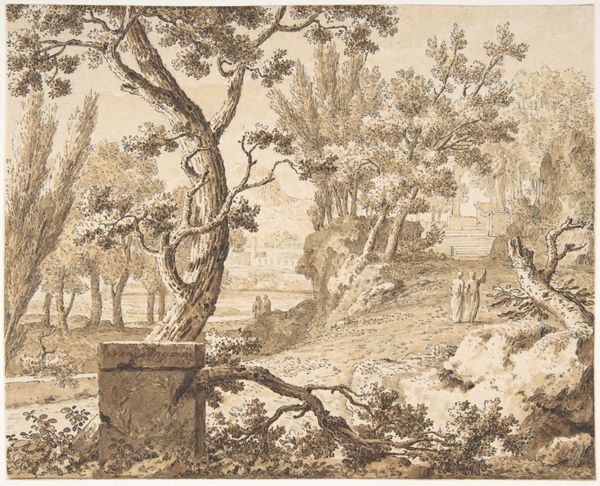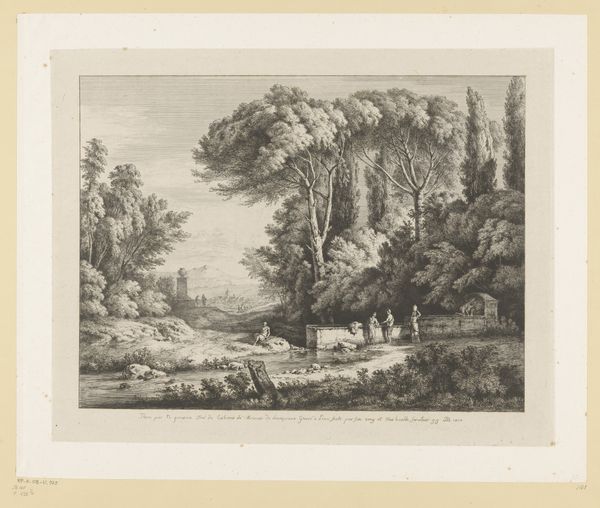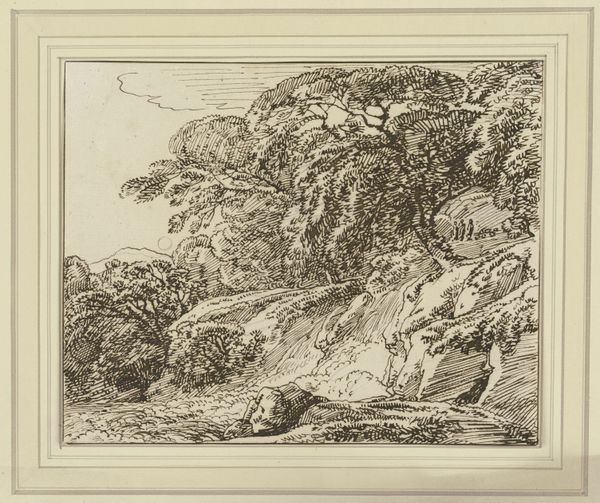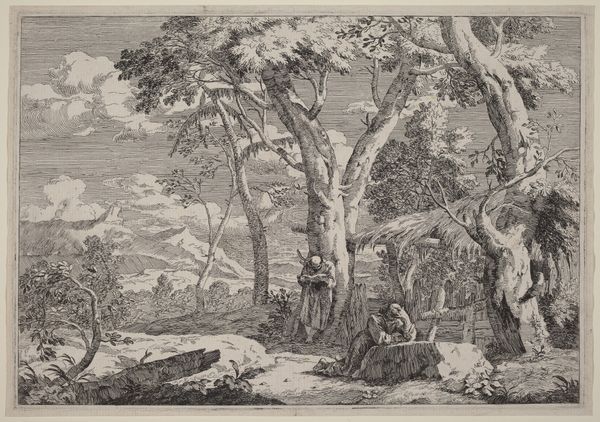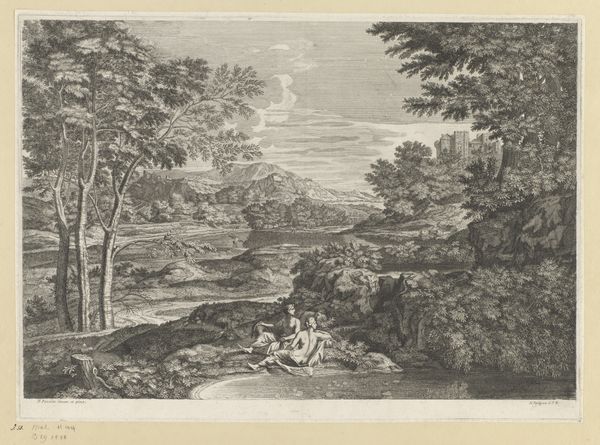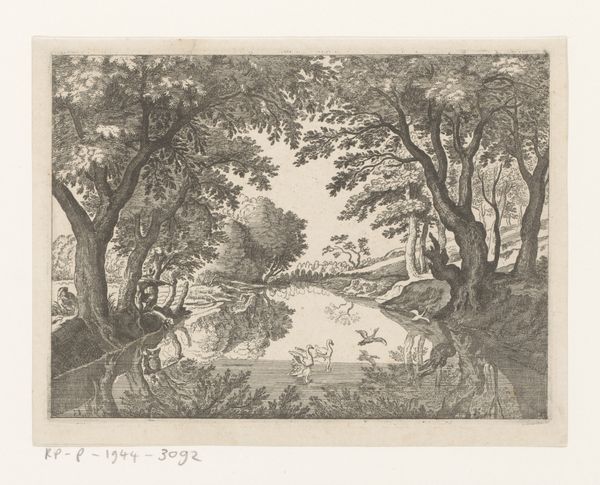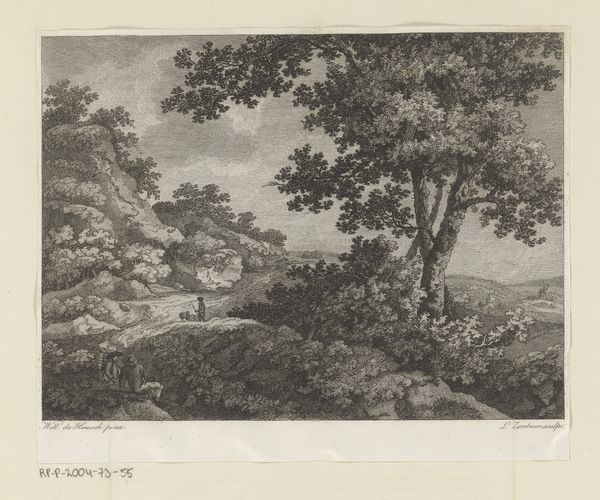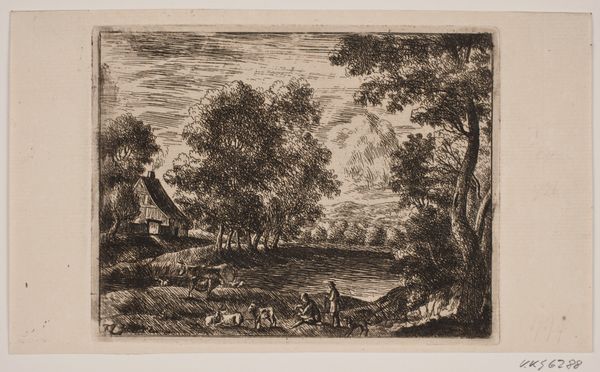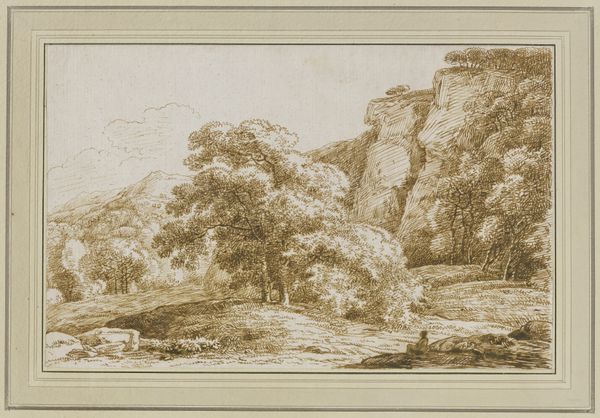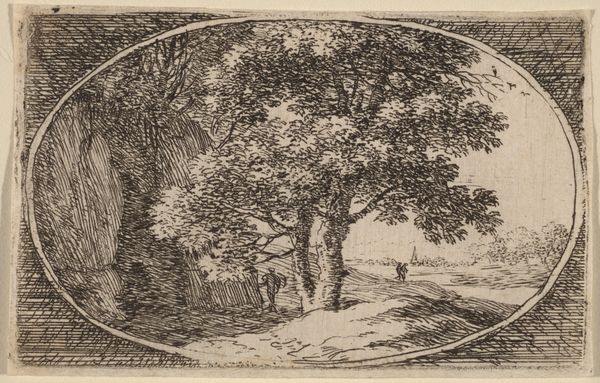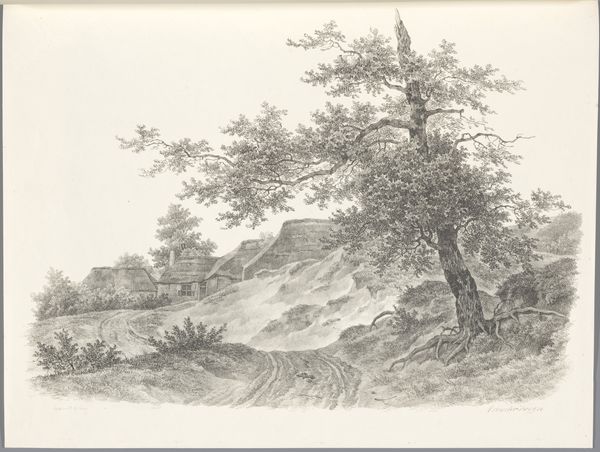
drawing, ink, pencil
#
drawing
#
landscape
#
charcoal drawing
#
ink
#
romanticism
#
pencil
Copyright: Public Domain
Curator: Here we have Franz Kobell’s “Park Landscape” held here at the Städel Museum. It's rendered in ink, pencil, and charcoal— a detailed drawing with elements of Romanticism. What are your initial impressions? Editor: It feels subdued. Brown inks bleeding into each other. I'm drawn to the rough texture of the craggy rock formation on the left juxtaposed against what seems a deliberately serene landscape. Curator: Yes, and considering its probable origins in the late 18th or early 19th century, it certainly reflects a move away from the more manicured gardens of the aristocracy and into a burgeoning appreciation of the ‘picturesque’. What do you think? Editor: Picturesque, definitely. Look at how Kobell layers his strokes! I see a concentration of pencil shading building form around the water's edge and on the face of that striking cliffside. It implies careful, repetitive labor...almost a performative rendering of nature. Curator: Absolutely. It makes me consider the institutional and social changes in art. This wasn’t commissioned by the church, necessarily, but speaks to broader audiences interested in depictions of landscape and nature through the artistic circles and the art market of the time. The artist had to capture that market's attention! Editor: I also notice how he hasn’t depicted human figures within the landscape itself, but look closely...do you see that architectural detail among the distant trees, or am I imagining it? This makes me wonder who this ‘park’ really serves… Who is this idealized view meant for? Curator: That touches on its wider cultural resonance! In showing the ‘natural,’ artists could communicate societal values tied to concepts of nationhood and personal liberty… things developing intensely in Kobell’s era. It’s quite impactful for just charcoal, ink, and pencil on paper! Editor: The impact arises from the hand of the artist; even in capturing the beauty of the scene there are subtle hints about land and property and control! Overall, though, the piece encourages me to think about Romanticism beyond paintings—into drawings, paper, the physical act of observing nature. Curator: Agreed. It opens up layers about Romanticism, societal expectations of nature, and how that period's artists contributed to visualizing these changing values.
Comments
No comments
Be the first to comment and join the conversation on the ultimate creative platform.
